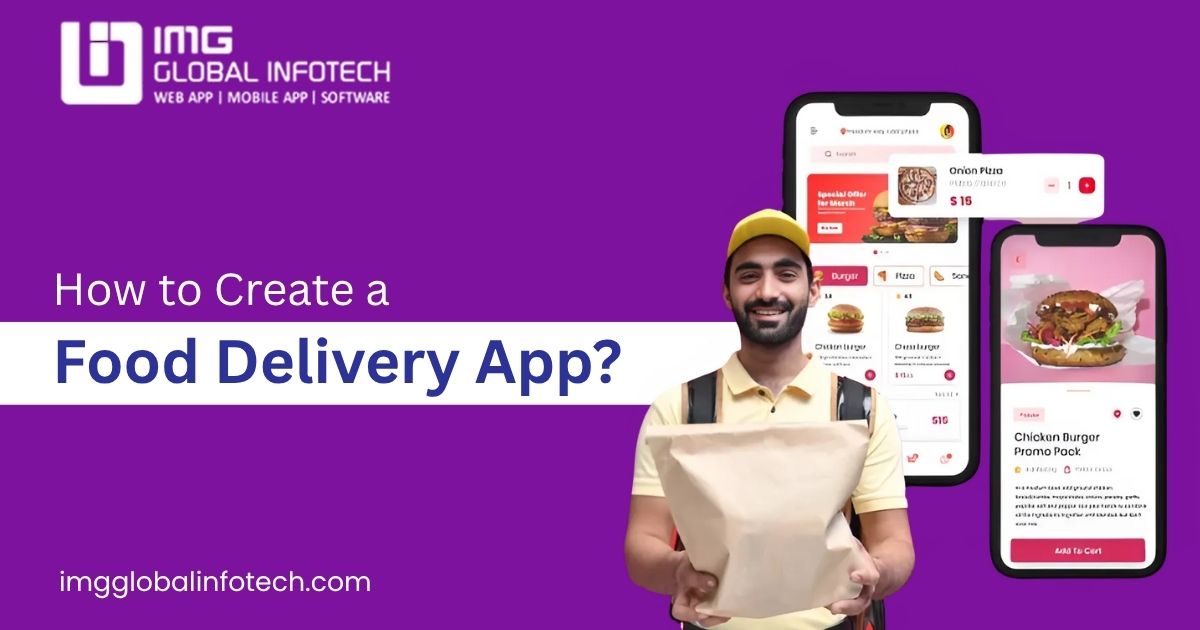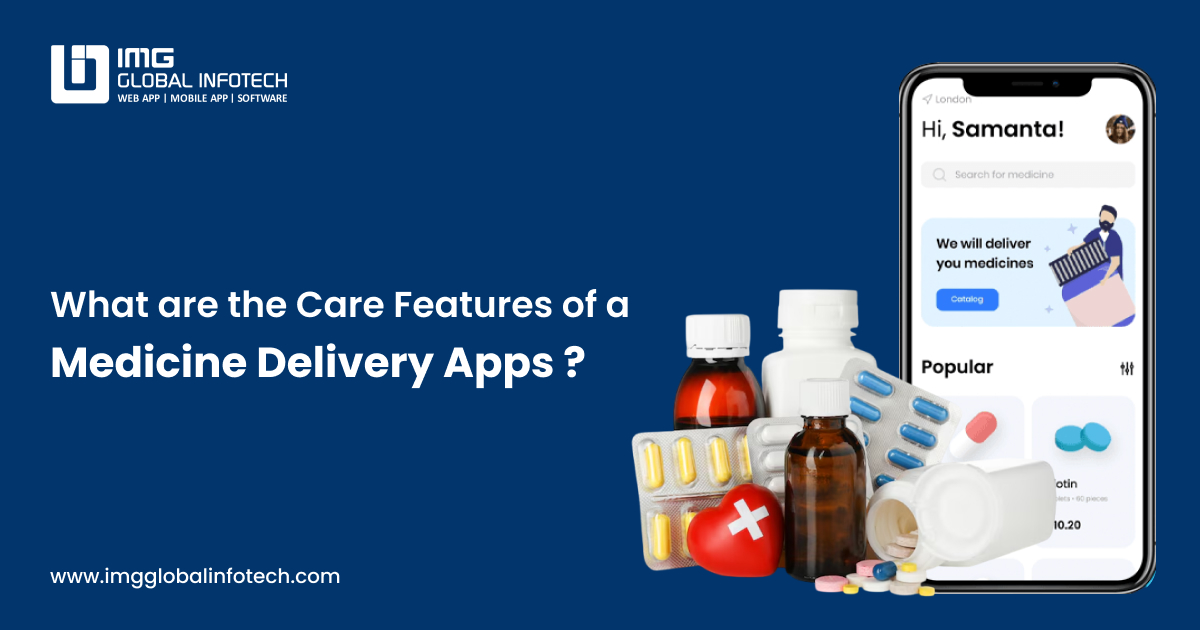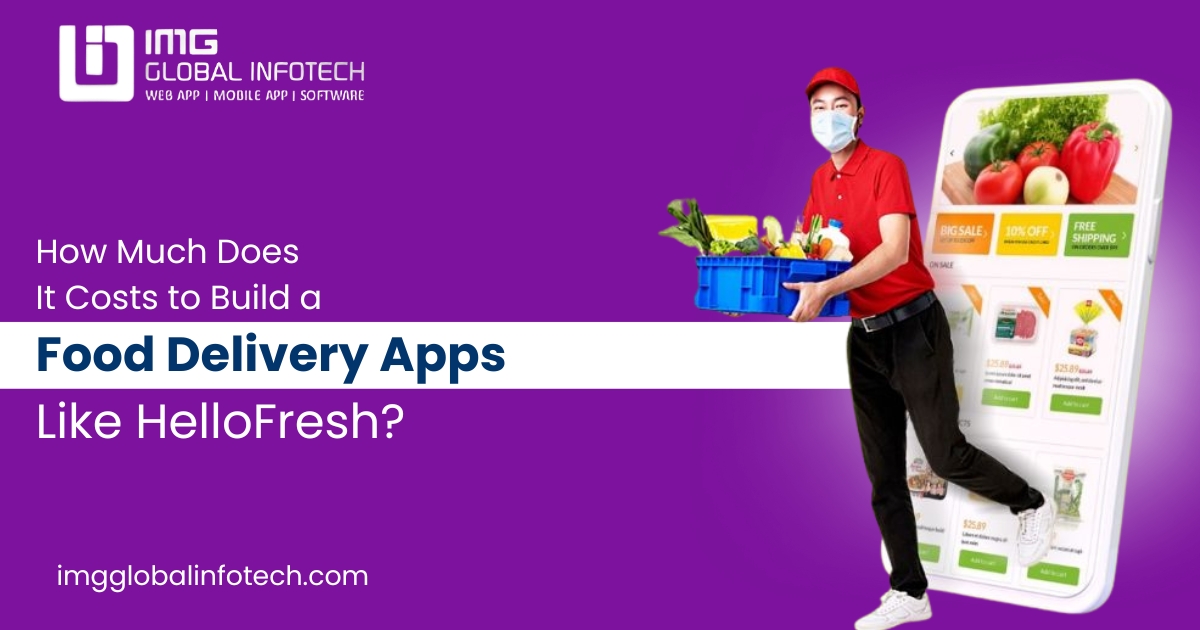How to Create a Food Delivery App - IMG Global Infotech

Strong 8k brings an ultra-HD IPTV experience to your living room and your pocket.
Food delivery apps have changed the way people go about getting and eating meals. Since food deliveries are getting more popular, many stores are working with delivery services to help them reach customers more quickly.
Using food delivery for meals is useful and quickly turns into a habit. In 2025, companies in the market will have to compete more and bring in new innovations. Users tend to expect their meals to arrive quickly, see threaded progress in real time, and make ordering convenient.
Now is the best time to launch a food delivery apps in USA for business. Following the right steps, using the best tools, and getting backing can make your app noticeable in a crowded marketplace.
9 Steps to Create a Food Delivery App
Step 1: Define Your Business Model
Before you start building your app, define how it will operate.
There are the main models:
- Aggregator Model
- Order and Delivery Model (Logistics Support)
- Single Restaurant Model
- Cloud Kitchen Model
- Subscription-Based Model
- Platform-to-Consumer (P2C) Model
- Restaurant-to-Consumer (R2C) Model
- Marketplace + Cloud Kitchen Hybrid Model
Revenue Generation Options-
- Commission on each order
- Delivery charges
- Surge pricing during peak hours
- Subscription plans for customers
- Subscription plans for restaurants
- Featured listings for restaurants
- In-app advertisements
- Third-party ad placements
- Promotional partnerships
- Franchise or licensing model
- Data monetization
- Service fees for payment processing
- White-label solutions for other businesses
- Loyalty programs with premium upgrades
- Sponsored banners or pop-ups in the app
Step 2: Conduct Market Research and Competitive Analysis
Understanding your market is very important. Check what customers like, when orders are highest and what types of food are popular in certain areas. Analyze your rivals to observe their strong points and their weaknesses.
Identify your target audience. Pick out whether your service is for students, working people or families. Your features and branding need to fit what your target users are looking for.
Step 3: Decide Core Features for Your Food Delivery Apps
Features are the heart of your app. They must deliver value to users, restaurants, and delivery personnel.
User Panel Features
- Sign-up/Login
- Restaurant search and filters
- Menu browsing and cart
- Real-time order tracking
- Secure payment gateway
- Ratings and reviews
Delivery Agent Panel Features
- Order notifications
- GPS navigation
- Status updates
- Earnings dashboard
Admin Panel Features
- Manage users and restaurants
- Payment and order analytics
- Offer management
- Customer support dashboard
Advanced Features
- AI-based food recommendations
- Live order tracking with map view
- Loyalty and referral programs
These additions can improve user engagement and boost retention.
Step 4: Choose the Right Technology Stack
A reliable tech stack ensures your app runs smoothly.
- Frontend: React Native, Flutter (for iOS and Android)
- Backend: Node.js, Laravel, or Django
- Database: MongoDB, MySQL
- Payment Integration: Razorpay, Stripe, PayPal
- Real-time Tracking: Google Maps API, Firebase
Decide if you want to go native (iOS and Android separately) or cross-platform (one codebase for both). Cross-platform options like Flutter save time and money.
Step 5: Design a User-Friendly UI/UX
After that, focus on designing a user-friendly experience for the interface and how people use your product. Apps that are easy to navigate, clean and responsive are favored by users.
Good UI/UX Design Principles
- Choose easy-to-see characters and colors that match the website’s theme.
- Keep the way people can move through your website simple.
- Reduce the number of actions required to make an order.
- Display attractive photographs of food.
- Have calls to action on the website that say "Order Now" or "Track Order".
Making applications user-friendly is a main concern during any food delivery app development.
Step 6: Hire a Reliable Food Delivery App Development Company
You need a tech partner who understands both business and development. IMG Global Infotech is a trusted name in the food delivery app development service space. We’ve built apps for startups, restaurants, and large chains.
Our team offers:
- Custom design and development
- Scalable architecture
- Ongoing technical support
- Quick turnaround times
Step 7: App Development Process – Step by Step
Here’s how we at IMG Global Infotech take your idea from paper to app:
Wireframing and Prototyping
We create wireframes to visualize the app's flow and structure. Then, we design clickable prototypes for user testing.
Development Phases
We follow agile methodology to develop modules in sprints. This allows quick testing and smooth progress tracking.
Testing and QA
We perform rigorous testing—manual and automated. Bugs are fixed before final delivery to ensure a flawless app.
Step 8: Launch and Deployment
Once your app is ready, we help you launch it on the App Store and Google Play Store.
Things to Consider:
- App store optimization (ASO)
- Proper description and keyword usage
- Pre-launch marketing and beta testing
A smooth launch ensures users trust your brand from the start.
Step 9: Post-Launch Support and Maintenance
Launching is just the beginning. Post-launch, we offer ongoing support:
- Bug fixes and performance monitoring
- Feature updates based on user feedback
- Scalability enhancements as you grow
Maintaining your app builds trust and improves customer retention.
Cost to Develop a Food Delivery App in 2025
The food delivery app development cost depends on various factors:
- Number of features
- UI/UX complexity
- Chosen technology stack
- Backend infrastructure
- Region of the development team
On average, a basic app costs between $10,000–$25,000, while an advanced feature app can go up to $50,000 or more.
Marketing Strategies to Grow Your Food Delivery App
Building the app is half the work; promoting it is equally important.
Key Marketing Tactics
- Run Google and social media ads
- Offer discounts on first-time orders
- Use SEO to increase visibility
- Partner with local restaurants
- Launch referral and loyalty programs
Marketing keeps your user base growing and engaged.
Conclusion
If you're ready to create a food delivery app, we’re here to help. IMG Global Infotech has the expertise, experience, and team to turn your idea into a high-performing app.
We don’t just build apps, we build digital success.
👉 Get in touch with us for a free consultation and quote today.
Note: IndiBlogHub features both user-submitted and editorial content. We do not verify third-party contributions. Read our Disclaimer and Privacy Policyfor details.




